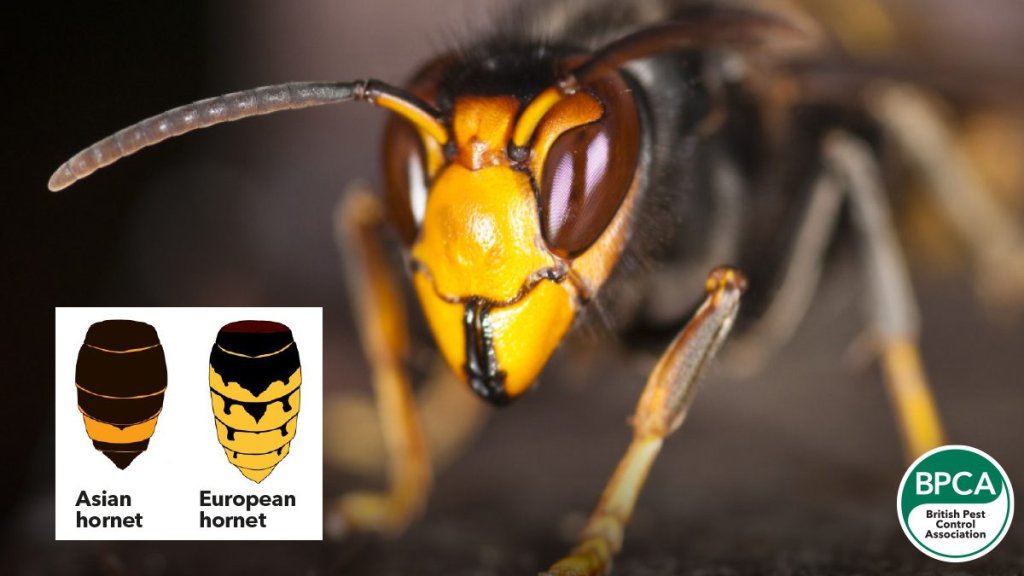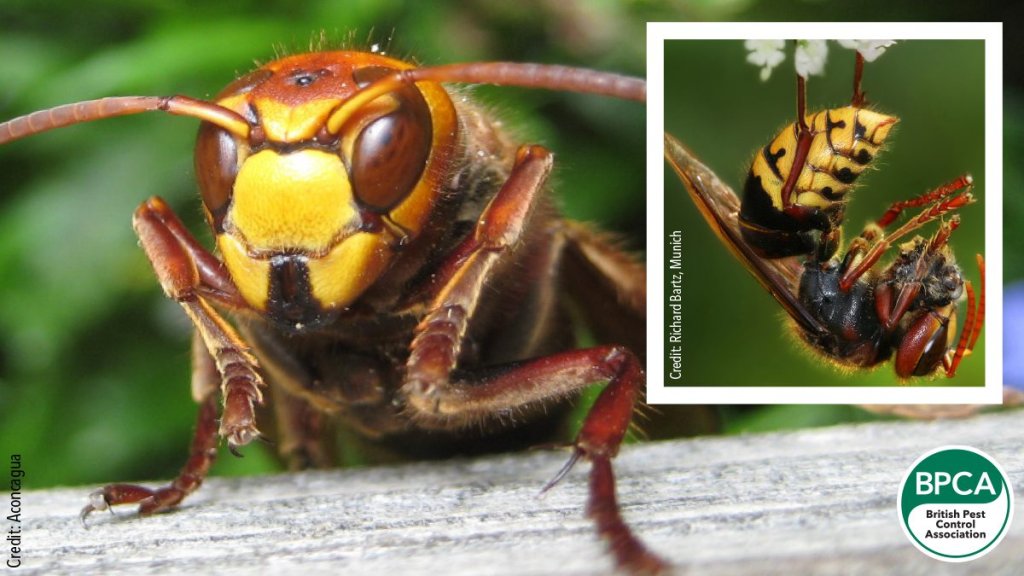Experts at British Pest Control Association (BPCA) are directing householders to an online guide that can help with identification of different types of hornet.
BPCA’s Things That Go Buzz information sheet outlines how to identify European and Asian hornets, as well as advice on what to do if you see one.
Since April 10, sightings of Asian hornets – a non-native predator that eats honeybees – have been reported in Northumberland, Dorset and Kent.
Asian hornets pose a threat to British bees and sightings should be immediately reported to the Non-native Species Secretariat.

Natalie Bungay, BPCA Technical Manager, said: “It is a concern that we have had three sightings of Asian hornets already this year, as they are a non-native invasive predator of our honeybee species and could have a major impact on our wildlife.
“As pest professionals, BPCA members play a key role in defending our native ecosystems, as well as protecting the public health.
“If you’re not sure what that stripey flying insect buzzing around your garden is, get in touch with a BPCA member who will have the technical knowledge to identify and deal with any infestation.”
Slightly smaller than native European hornets, Asian hornets are black or dark brown with a distinctive yellow band at the rear, bright yellow tips to the legs, a yellow ‘belt’ at the waist and a black head with an orange or yellow face.
European hornets have markings similar to a wasp on their abdomen, with dark-coloured legs.

A common mistake is that sightings of Asian hornets in the UK have been referred to as ‘murder hornets’ or Asian giant hornets.
These are native to East Asia and Japan, and are infamous for decimating honeybee colonies, but they have never been spotted in the UK.
Natalie added: “A sting from a European hornet, Asian hornet or wasp will be painful and may result in anaphylaxis, which can be life-threatening, but is treatable if action is taken quickly.
“Anyone who has concerns about hornet activity, should contact a pest professional such as a BPCA member, who will have the technical knowledge to spot the difference between an Asian hornet and a native insect.”
BPCA members:
- Carry the correct insurances
- Are trained and qualified technicians
- Are assessed to the British Standard in pest management EN 16636
- Follow BPCA’s Codes of Best Practice.
To find a BPCA member visit: bpca.org.uk/find.
The Things That Go Buzz guide can help with identification of different types of hornet as well as wasps, bees and hoverflies.
To report a sighting of an Asian hornet, go to the app:
report-asian-hornet-sightings or email: alertnonnative@ceh.ac.uk











